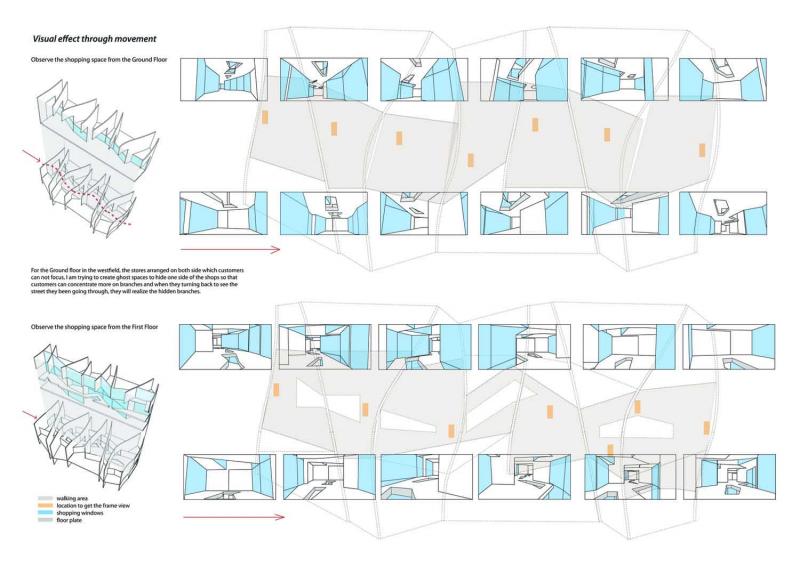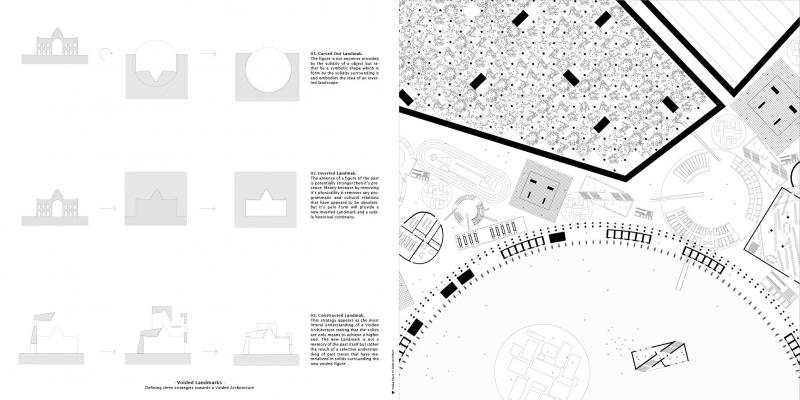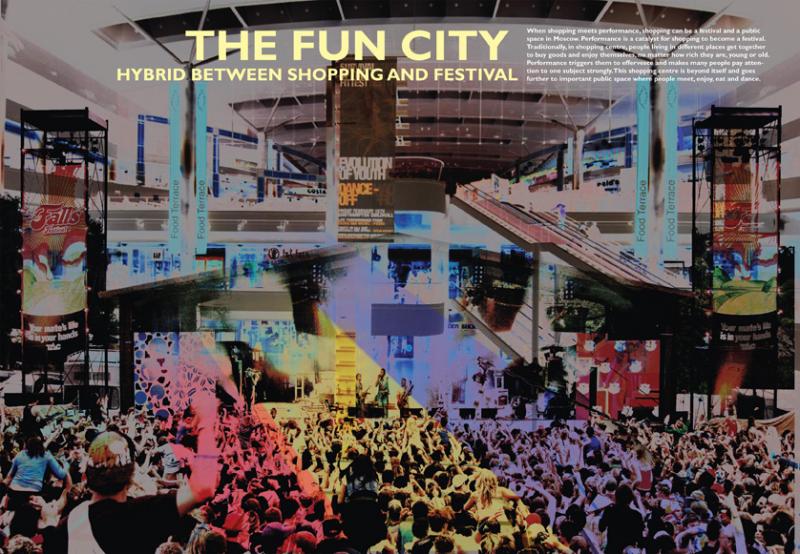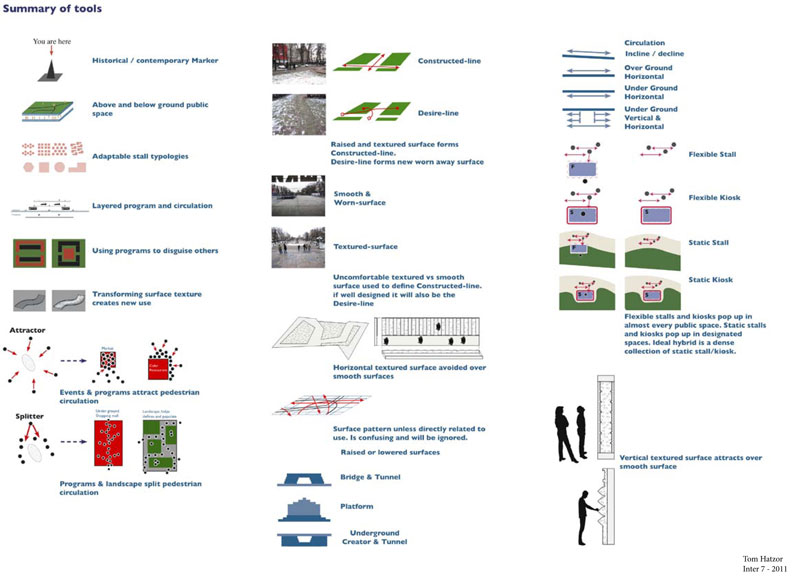Eastern Promises: Shopping Transfers
Inter 7 is concerned with transitional urban contexts, targeting transfers between site systems that combine formal and programmatic arsenals. This year, we engaged with ingenious shopping systems in post-Soviet Moscow, rife with challenges and possibilities. Throughout our research and fieldwork on urban sites and commercial typologies we remained alert to what things look like as opposed to how they work – appearance vs operation. ‘Diagrammatic diagnostics’ uncovered rules behind Moscow paradoxes. We mined the city’s contradictory layers, images and events for portable inventions and then condensed them through design provocations.
Focusing on sore spots around the pivotal Pushkin Square, we explored commercial devices for ruptures between transportation, residential and cultural programmes. We depended on shopping’s promiscuity to accommodate breaks, gaps and schisms. We relied on maps and operation manuals to supply us with active ‘elements’ – such as an event-wall, a ghost-space, or a stage-stall. We reconciled diverse elements via abstract and concrete ‘infrastructures’, projected by both layering site systems in diagrammatic maps and integrating formal prototypes in scalable models. Linking opposing case-studies, a ‘plastic fit’ between form and programme further empowered our propositions on several scales.
Student projects supplied flexible frameworks for heterogeneous interventions rewriting relationships between spaces and functions, images and flows, products and processes. In some cases, shopping bars and spines condensed patches of activity into continuous megastructures of performance, while defined voids allowed for reprogramming. In others, trade channels and corridors expanded circulation networks, while branded atmospheres integrated misplaced or forgotten urban fragments. Further proposals focused on commercial walls as thick urban edges as well as interfaces between public and private zones. Following the unit’s ambition, all projects drew on concepts, diagrams, design models and detail applications in order to multiply theoretical and practical outputs.



